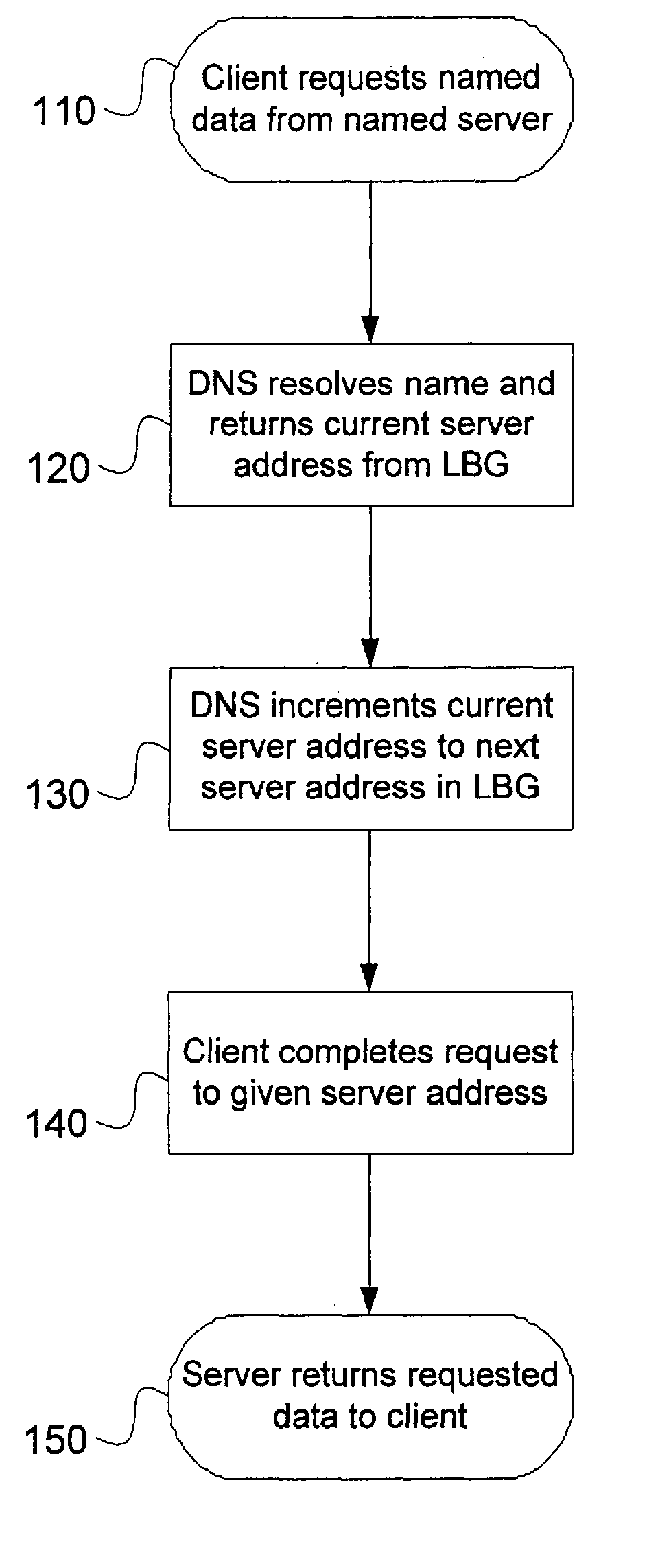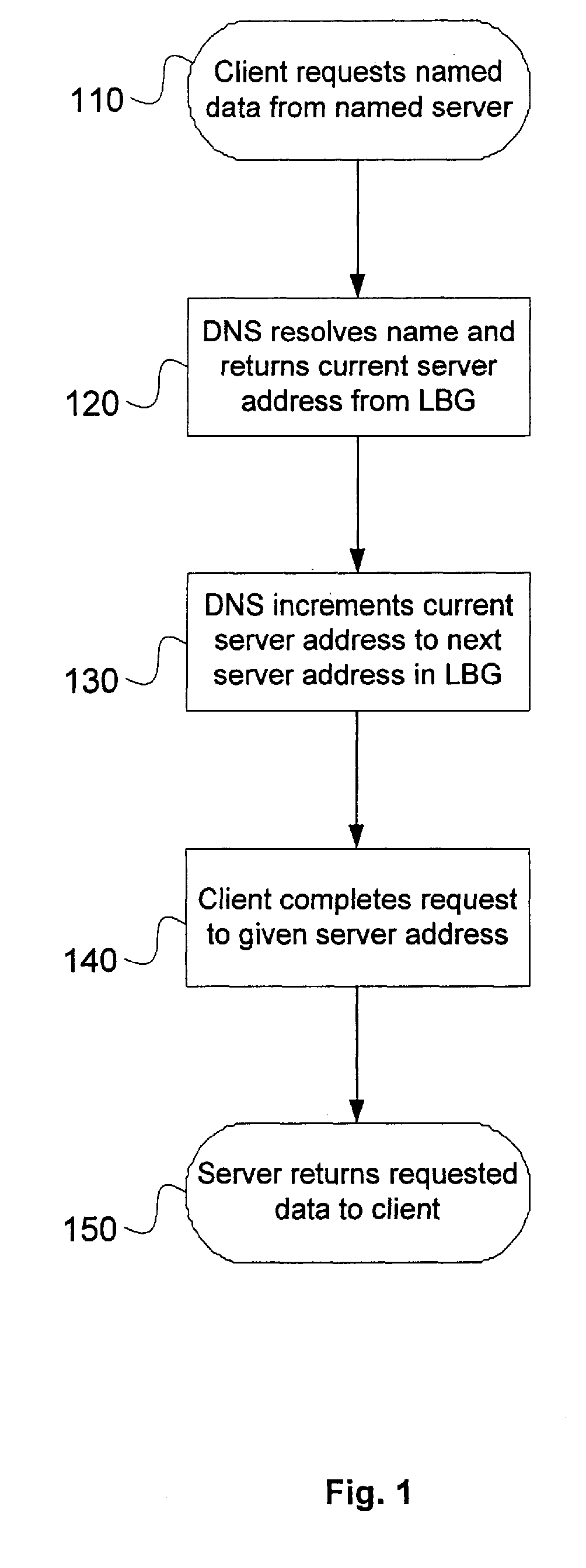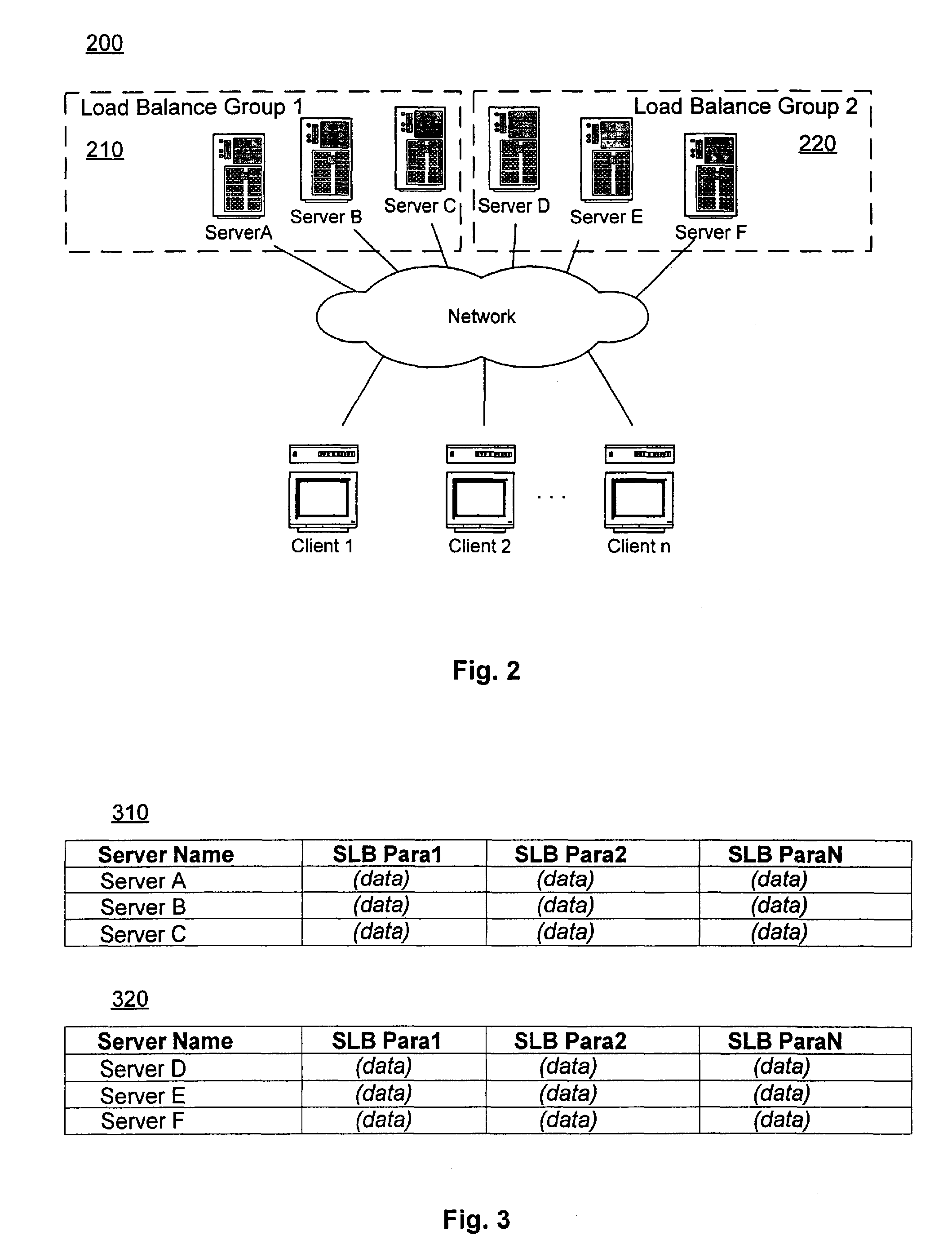System and method for digital media server load balancing
- Summary
- Abstract
- Description
- Claims
- Application Information
AI Technical Summary
Benefits of technology
Problems solved by technology
Method used
Image
Examples
Embodiment Construction
[0045]FIG. 2 shows an exemplary digital media delivery system that includes six digital media servers A-F which provide content to a plurality of clients via a network. In the exemplary embodiment of FIG. 2, the six servers are divided into two load-balancing groups (LBG) 210, 220. Servers A-C are designated as belonging to load-balancing group 1 (210) and servers D-F are designated as belonging to load-balancing group 2 (220). Load-balancing groups 210, 220 may or may not be geographically diverse, but are logical groupings that designate which servers will share state information in a preferred embodiment of the present system and method, as described below.
[0046] Each server A-F preferably maintains state information concerning one or more parameters associated with each server in its group. Accordingly, each of servers A-C preferably maintains such state information for servers A-C and each of servers D-F preferably maintains such state information for servers D-F.
[0047] One p...
PUM
 Login to View More
Login to View More Abstract
Description
Claims
Application Information
 Login to View More
Login to View More - R&D
- Intellectual Property
- Life Sciences
- Materials
- Tech Scout
- Unparalleled Data Quality
- Higher Quality Content
- 60% Fewer Hallucinations
Browse by: Latest US Patents, China's latest patents, Technical Efficacy Thesaurus, Application Domain, Technology Topic, Popular Technical Reports.
© 2025 PatSnap. All rights reserved.Legal|Privacy policy|Modern Slavery Act Transparency Statement|Sitemap|About US| Contact US: help@patsnap.com



